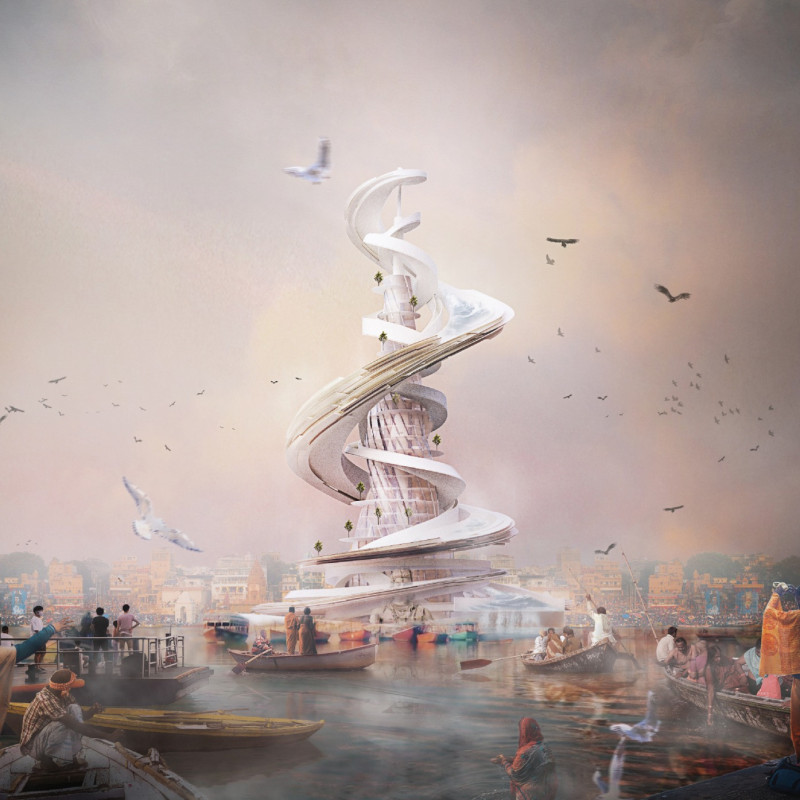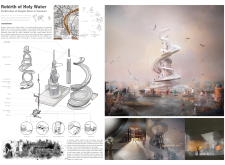5 key facts about this project
Unique Design Approach to Water Purification
A key feature of this architectural project is its innovative water purification system, which employs bioremediation techniques. This system operates through carefully designed pathways within the building that filter and cleanse the Ganges water. The architectural form spirals upward, mirroring the flow of water while also creating dynamic spaces for interaction. This design not only enhances the aesthetic experience but also promotes environmental sustainability, making it a distinctive addition to the region’s approach to river management.
Integration of Community Spaces
Another notable aspect of the project is the incorporation of community-focused spaces. The central building functions as a multifunctional hub, providing areas for exhibitions, workshops, and community gatherings. This integration encourages local involvement in water management practices and fosters a sense of ownership over the Ganges. The design also includes terraces and observation points, which enable users to engage directly with the river, reinforcing cultural practices associated with the Ganges while promoting environmental awareness.
This architectural project encapsulates the potential of design to address critical environmental issues through innovative solutions. The combination of purification technology, community engagement, and careful consideration of cultural significance represents a forward-thinking approach to architecture in Varanasi. For further insights, exploring architectural plans, sections, and detailed designs will provide a comprehensive understanding of the project’s scope and intentions.























